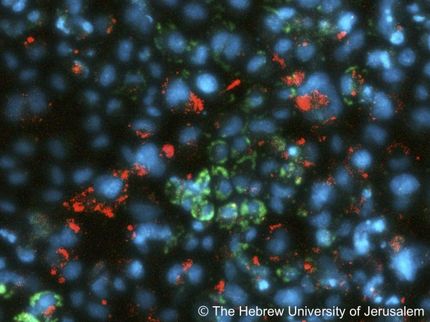New Notre Dame study examines important Ebola protein
Advertisement
A new study by Robert Stahelin, an adjunct associate professor of chemistry and biochemistry at the University of Notre Dame and an associate professor at the Indiana University School of Medicine-South Bend, as well as a member of Notre Dame's Eck Institute for Global Health, investigates how the most abundant protein that composes the Ebola virus, VP 40, mediates replication of a new viral particle.
"In brief, the Ebola virus has just seven proteins that encode in its genome," Stahelin said. "VP40 is critical to the formation of a new viral particle and it does this by interacting with lipids inside human cells."
Stahelin and co-investigator Smita Soni, a postdoctoral researcher at the Indiana University School of Medicine, found that VP40 is able to assemble in vitro (i.e., in a test tube), without any human cells present and mediate formation of virus-like particles when the human lipid phosphatidylserine is found in solution with VP40, but not other control lipids.
"This means, in conjunction with our previous research papers, that Ebola virus VP40 can assemble and interact with human phosphatidylserine to generate the lipid coat of the virus," Stahelin said. "For completeness sake, Ebola virus is a lipid-enveloped virus and gets its lipid bilayer coat from the human cell it infects. In essence, Ebola VP40 is assembling on phosphatidylserine-enriched regions of human cells to form the long filamentous virus particle we are so familiar with seeing."
The long-term objective of Stahelin's research is to apply principles learned from biochemical and biophysical studies to generate novel therapeutics to combat Ebola.
"This study has greatly helped us understand how the Ebola virus replicates and should at least allow us to test some new drug leads and hypothesis," he said.
Most read news
Other news from the department science

Get the life science industry in your inbox
By submitting this form you agree that LUMITOS AG will send you the newsletter(s) selected above by email. Your data will not be passed on to third parties. Your data will be stored and processed in accordance with our data protection regulations. LUMITOS may contact you by email for the purpose of advertising or market and opinion surveys. You can revoke your consent at any time without giving reasons to LUMITOS AG, Ernst-Augustin-Str. 2, 12489 Berlin, Germany or by e-mail at revoke@lumitos.com with effect for the future. In addition, each email contains a link to unsubscribe from the corresponding newsletter.


























































